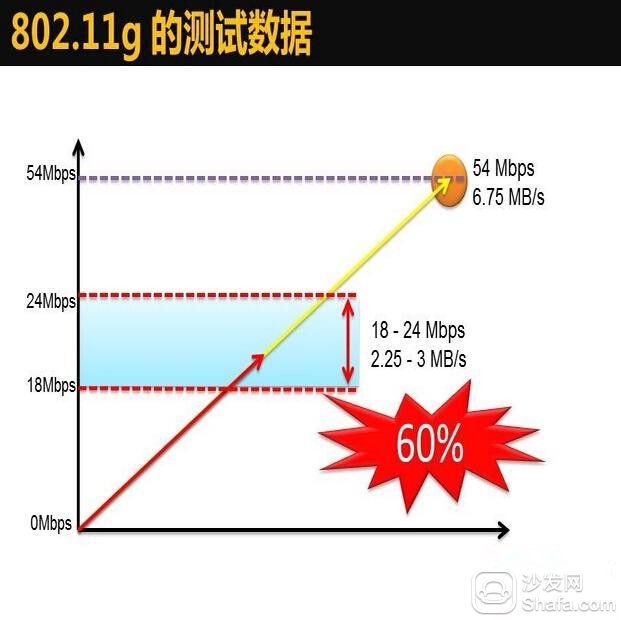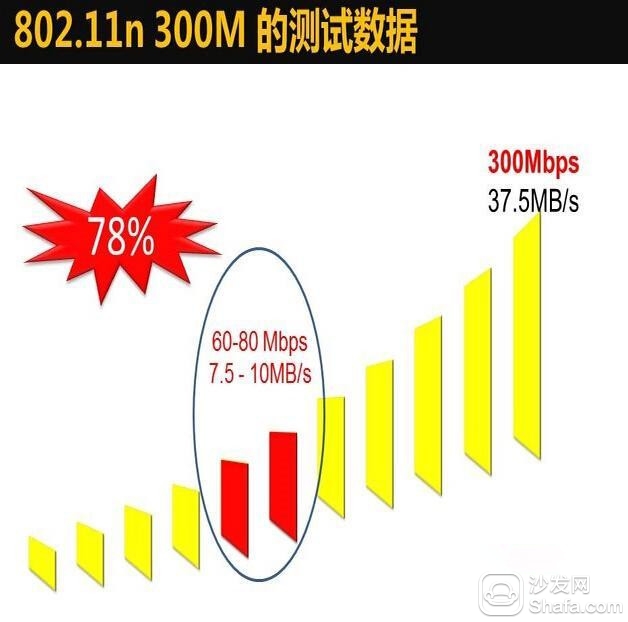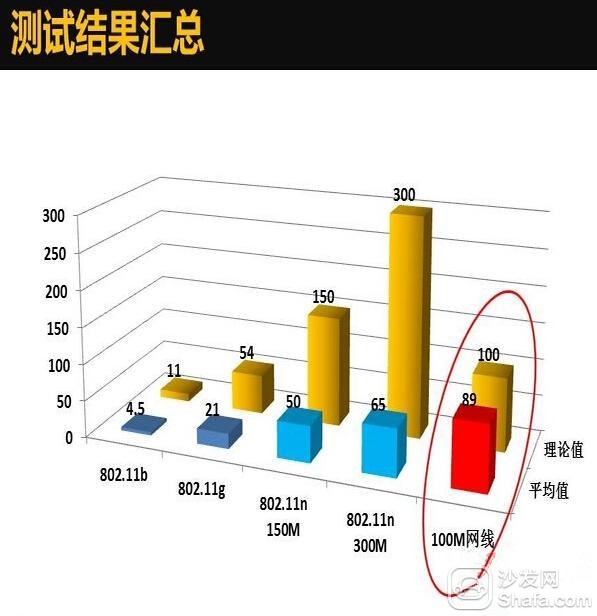When choosing a wireless router, which parameter is your most concern? I believe that the vast majority of users' answers are wireless transmission rates.

Yes, this figure, which often appears prominently in the packaging of products, has long been the most important parameter for wireless routers.
But you can understand that this figure is only a theoretical value, and it has a lot of moisture compared to the actual transmission rate of wireless routers. So how big is the water content of this most important parameter? Let's discuss it together.
This is the PPT format version. The boss of the department recently complained that the wireless network was slow. Therefore, the PPT version was explained to it.
This is the current mainstream wireless standard and its maximum transmission speed, mainstream 100Mbps desktop access wired network, after the conversion is the back of the data.
We have all discovered that both 802.11n speed standards exceed the 100Mbps wired network, so which is faster?

With doubt, we will break it down one by one.
The following data was extracted from the Internet and tested in a single Pair and encrypted environment.
First, let's take a look at the performance of 802.11b. The theoretical maximum speed of 802.11b is 11Mbps, which is 1.375MB/s. In the actual test process, most of the 802.11b networks have a transmission speed of 4-5Mbps, that is, 512K- 640KB/s. The water content reaches 60%. Such a speed does not meet our requirements.

Next, let's take a look at the test performance of 802.11g, which is the theoretical maximum speed of the most widely used standard 802.11g in previous years, 54Mbps, ie 6.75MB/s. Most of the 802.11g networks in the actual test process The transmission speed is between 18-24Mbps, ie 2.25-3MB/s. Water also reached 60%
Now our company is using 802.11g, which is 2.25-3MB/s, which is obviously slower than 100M wired network.
Therefore, it seems to people that when the wireless network standard transitioned from 802.11b to 802.11g, this was just an upgrade and the effect did not surprise us.

Today, both 802.11b and 802.11g are outdated. Now that the mainstream is 802.11n, how does 802.11n perform?
Let's take a look at 150M 802.11n, the theoretical maximum speed is 150Mbps, that is, 18.75MB/s, that is the performance in the actual test process? I think you have 802.11n at home, according to everyone's experience, that can be achieved How many?
In the actual measurement process, the speed of most 150M network devices is between 45-55 Mbps, that is, 5.625-6.875MB/s. Compared to the theoretical maximum speed, the moisture value is as high as 66%.

At this speed, I think everyone is not satisfied. Let's look at the last one.
The 300M 802.11n has a theoretical maximum speed of 300 Mbps, which is 37.5 MB/s, which is three times the speed of a 100M wired network.
In the actual testing process, the average speed is only 60-80Mbps, ie 7.5-10MB/s, and the moisture value is as high as 78%. This result is somewhat disappointing. Little friends are shocked!
Of course, encryption will affect part of the speed, if you want to be quick, you can streaking, but it is not recommended, we will not do so.
From this point of view, China Telecom's 100M broadband is actually a bit wasteful. The wireless router is a bottleneck. It will perform better in the 802.11ac environment, but the 100M bandwidth may also be playing virtual.
Now some of the new home-use 802.11n products can reach 100-105 Mbps in a single Pair and non-encrypted environment.

Finally, we are all familiar with the 100M cable network, no doubt, the theoretical maximum reaches 100Mbps, which is 12.5MB/s.
The average test speed can reach 89Mbps, ie 11.125MB/s, and the moisture value is only 11%. The performance is still very good.

Through the analysis of the previous test data, everyone is very clear who is slow.
In actual speed, 100M wired network still occupies certain advantages.
More importantly, the 100M wired network is a switched network. The 100M bandwidth is shared between the two nodes. However, the wireless network is a shared network. The actual speed will be degraded by the increase of client data connected to the AP.

What is the reason why the wireless network is so watery?
I think there are five points:
1. The wireless network uses half-duplex transmission, and 50% of it is cut off. Time Division Multiplexing
2. The use of complex environments, wall and metal interference, and congestion in the 2.4 GHz band will affect the transmission speed.
3, the speed factor is the transmission distance, you do not want to reach the theoretical maximum connection speed of 50 meters away
4, the impact of wireless encryption, streaking is the fastest, but not recommended.
5, the compatibility of different manufacturers of equipment, the same standard, the previous few years the device can only reach 80Mbps, now the production of equipment may reach 100Mbps.

There is such a huge gap between the actual wireless transmission rate and the theoretical transmission rate. So is the wireless network still worth choosing?
The answer is certainly yes. After all, this is taking advantage of its weaknesses and the advantages of wired networks.
Although the theoretical transmission speed of wireless networks has a lot of moisture, we can see that the gap between wireless networks and wired networks is narrowing. At present, 300M wireless routers can already provide actual wireless transmission rates exceeding 60 Mbps, compared to the 90 Mbps performance of wired networks. The gap is not obvious. Even if you watch high-definition video over a wireless network, it can be competent. With the launch of 450Mbps wireless products, the actual speed of wireless networks will reach 130Mbps.
And there is a newer 802.11ac standard.

Recommended installation sofa butler, download address: http://app.shafa.com/

Hot Apps Recommended: HDP VST All-in-one Fast-viewing film Dragons Live Karaoke King TV Thumb Playing ZAKER
![<?echo $_SERVER['SERVER_NAME'];?>](/template/twentyseventeen/skin/images/header.jpg)